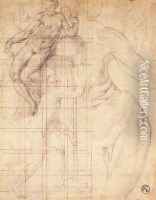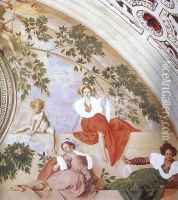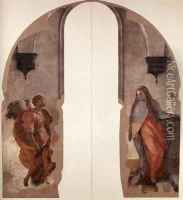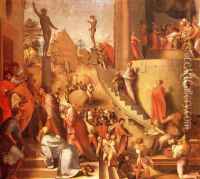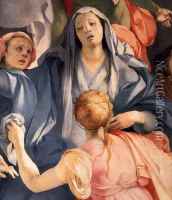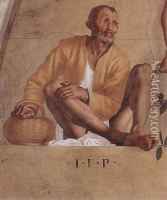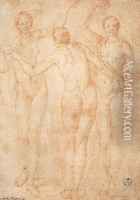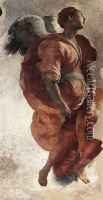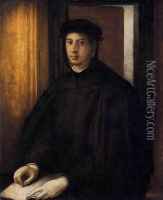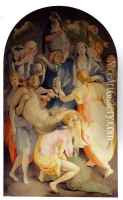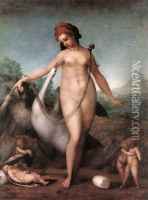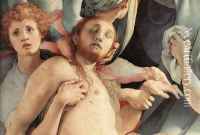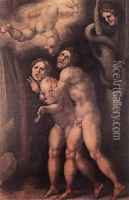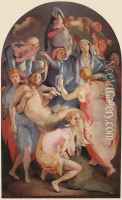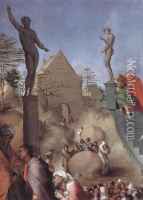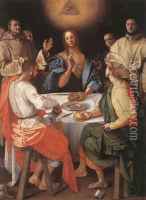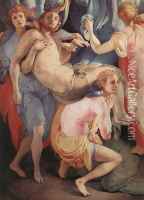(Jacopo Carucci) Pontormo Paintings
Jacopo Carucci, known as Pontormo, was an Italian Mannerist painter and portraitist from the Florentine School. Born on May 24, 1494, in the town of Pontorme near Empoli, Tuscany, he was an apprentice under Leonardo da Vinci, Piero di Cosimo, and Mariotto Albertinelli. However, his primary influence and mentor was Andrea del Sarto, whose stylistic tendencies can be seen in Pontormo's early works.
Pontormo's style is characterized by its unusual choices in color, elongated figures, and awkward spatial constructions, which reflect the Mannerist interest in expressive form over the balanced compositions of the Renaissance. His work also often conveys a sense of emotional alienation and tension, which was a departure from the composed humanism of his predecessors.
One of Pontormo's most famous works is the 'Deposition from the Cross' (1525-1528) in the Capponi Chapel in the church of Santa Felicità, Florence. This masterpiece is noted for its complex composition, with figures entangled in a spiraling motion, creating a sense of disorientation and emotional intensity.
Throughout his career, Pontormo also completed a number of portraits that are highly regarded for their psychological depth and subtle use of color. His religious and mythological compositions frequently display a personal interpretation that some critics have described as neurotic, yet they are undeniably powerful and unique.
Pontormo remained largely in Florence throughout his life, and his later period was marked by increasing eccentricity and isolation. Unfortunately, some of his later works, including a vast Last Judgment fresco for the church of San Lorenzo, Florence, were left unfinished and are now lost. Pontormo's diary, which he kept in his final years, provides valuable insights into his daily life and the artistic milieu of the time.
Jacopo Pontormo died on January 2, 1557, in Florence. His legacy is that of a pivotal figure in the transition from the High Renaissance to Mannerism, and his works continue to be studied for their innovative approach to color, composition, and emotional expressiveness.
